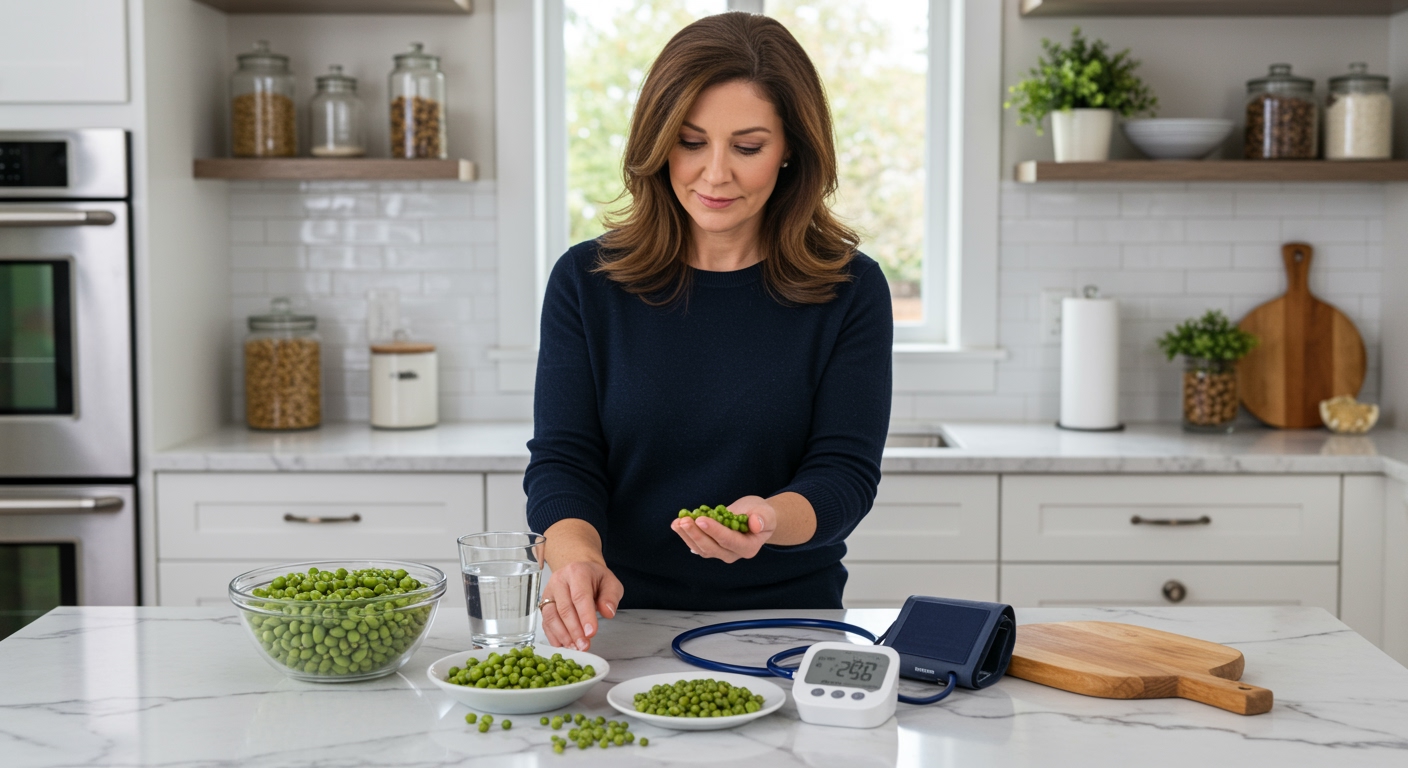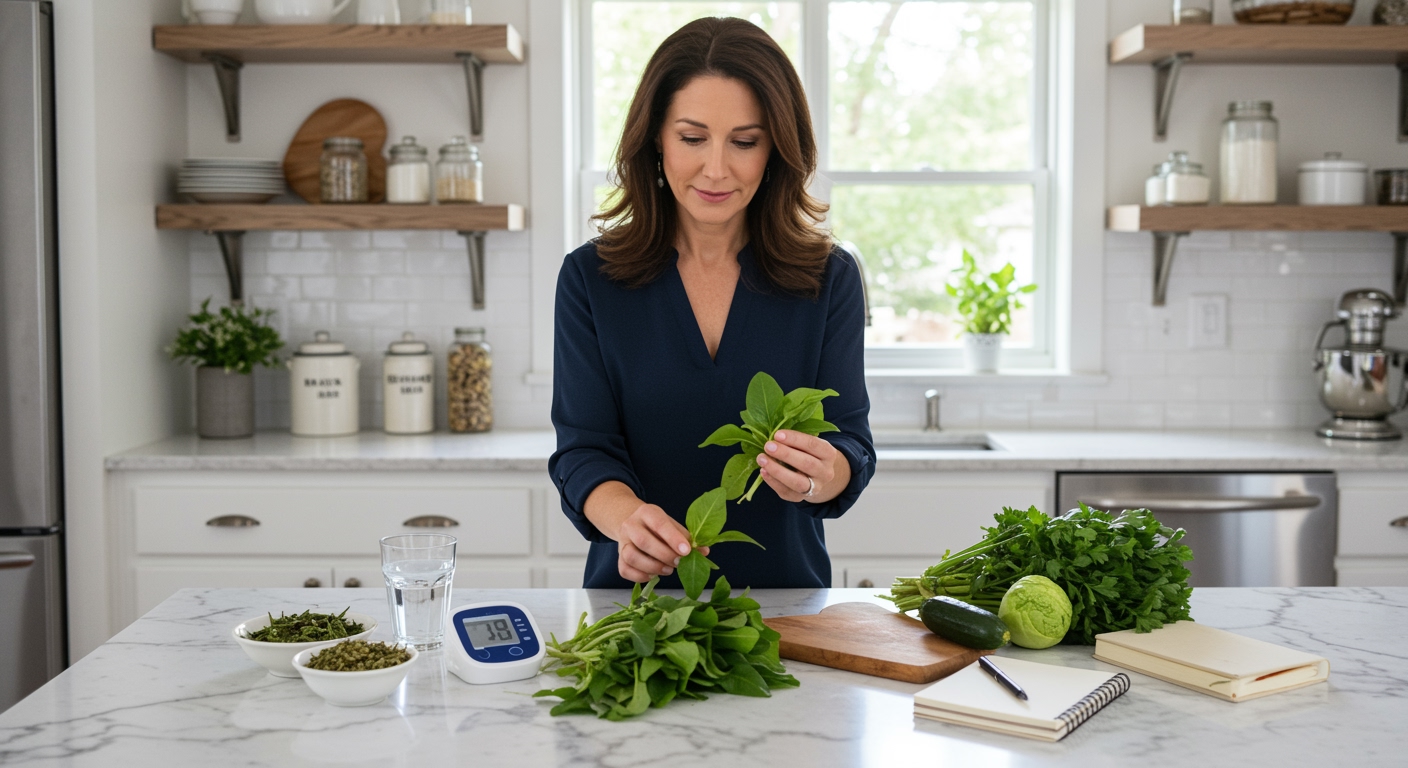✪ Key Takeaway: Hypotension patients should eat guar beans in moderation as their high fiber content may lower blood pressure further.
Introduction
Your doctor just told you that your blood pressure is too low and you need to watch what you eat.
You might be wondering if certain vegetables like guar beans could make your hypotension worse or if they might actually help stabilize your blood pressure levels.
Hi, I am Abdur, your nutrition coach and today I am going to explain exactly how guar beans affect blood pressure and whether hypotension patients should include them in their diet.
What Are Guar Beans And How Do They Affect Blood Pressure?
Guar beans are green pod vegetables also known as clusters beans that grow in hot, dry climates.
These beans contain about 10 grams of fiber per cup, making them one of the highest fiber vegetables you can eat.
The high fiber content in guar beans creates a gel-like substance in your digestive system when mixed with water.
This gel formation slows down nutrient absorption and can affect how your body processes sodium and other minerals that influence blood pressure.
Research shows that soluble fiber like the kind found in guar beans tends to have a blood pressure lowering effect in most people.
The mechanism works by reducing sodium absorption in your intestines and improving overall vascular function through better cholesterol management.
✪ Fact: Guar beans contain more fiber than most other green vegetables including broccoli and spinach.
Should Hypotension Patients Avoid Guar Beans Completely?
You do not need to avoid guar beans completely if you have hypotension, but you should be strategic about timing and portion sizes.
The blood pressure lowering effects of guar beans are temporary and mild in most healthy individuals.
However, if your hypotension is severe or you take medications that already lower blood pressure, even small changes can make a difference.
The key is to monitor how you feel after eating guar beans and adjust your intake based on your individual response.
Some hypotension patients actually benefit from the steady energy release that high fiber foods like guar beans provide.
This steady energy can help prevent the blood sugar spikes and crashes that sometimes worsen hypotension symptoms like dizziness and fatigue.
✪ Pro Tip: Start with small portions of guar beans and monitor your blood pressure response before increasing intake.
How Much Guar Beans Can Hypotension Patients Safely Eat?
Hypotension patients can safely eat about half a cup of cooked guar beans per day without significant blood pressure concerns.
This portion provides approximately 5 grams of fiber along with important nutrients like folate, vitamin K, and potassium.
The timing of when you eat guar beans matters more than the exact amount for most hypotension patients.
Eating guar beans with meals that contain adequate sodium and protein can help offset any potential blood pressure lowering effects.
You should avoid eating large portions of guar beans on an empty stomach or when you are already experiencing hypotension symptoms.
If you notice increased dizziness, fatigue, or lightheadedness after eating guar beans, reduce your portion size or eat them less frequently.
✪ Note: Always eat guar beans as part of balanced meals rather than consuming them alone.
What Are The Best Ways To Prepare Guar Beans For Hypotension?
The best preparation method for hypotension patients is to cook guar beans with adequate salt and pair them with protein-rich foods.
Sautéing guar beans with a pinch of sea salt helps maintain electrolyte balance while still providing the nutritional benefits.
Adding guar beans to dishes with lean meats, eggs, or dairy products creates a more balanced meal that supports stable blood pressure.
Avoid preparing guar beans in ways that concentrate their fiber content, such as juicing or making smoothies with large quantities.
Steaming or light stir-frying preserves nutrients while making the beans easier to digest and less likely to cause digestive discomfort.
You can also combine guar beans with naturally sodium-rich vegetables like celery or add a small amount of healthy fats like olive oil to slow fiber absorption.
✪ Pro Tip: Cook guar beans with herbs like rosemary or thyme to enhance flavor without adding excess sodium.
The Bottom Line
Hypotension patients can include guar beans in their diet but should start with small portions and monitor their blood pressure response carefully.
Smart nutrition is about understanding your individual needs rather than following blanket restrictions that may not apply to your specific health situation.
I would love to hear about your experience with guar beans and blood pressure in the comments below, and please feel free to share any questions you might have about managing hypotension through diet.
References
At NutritionCrown, we use quality and credible sources to ensure our content is accurate and trustworthy. Below are the sources referenced in creating this article:
- K Health: What to Eat for Low Blood Pressure
- Narayana Health: Health Benefits of Clusters Beans
- Manhattan Cardiology: What to Eat to Help Raise Low Blood Pressure
- Medical News Today: Low Blood Pressure Diet





